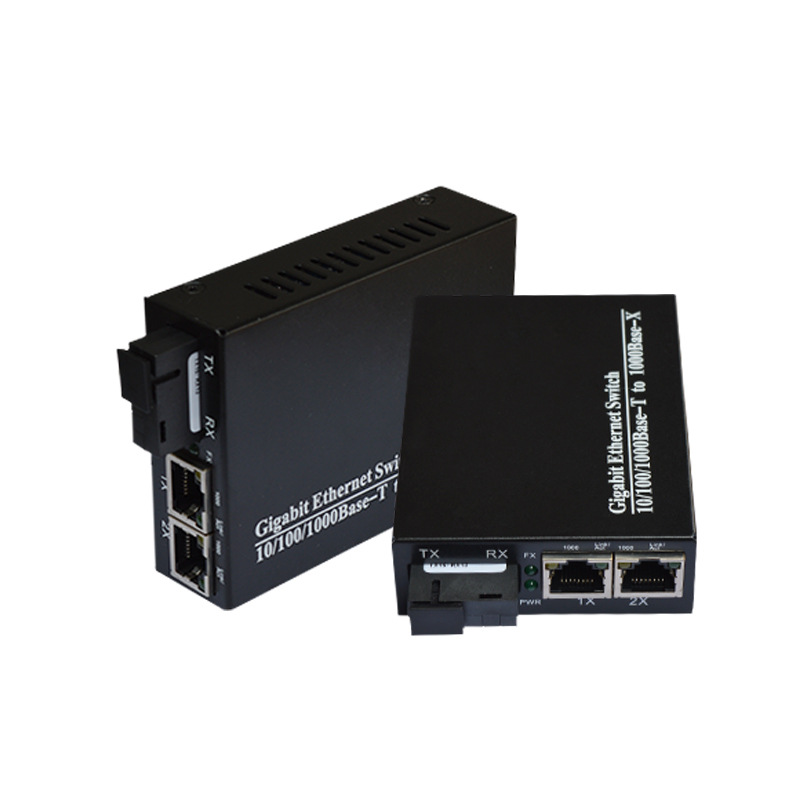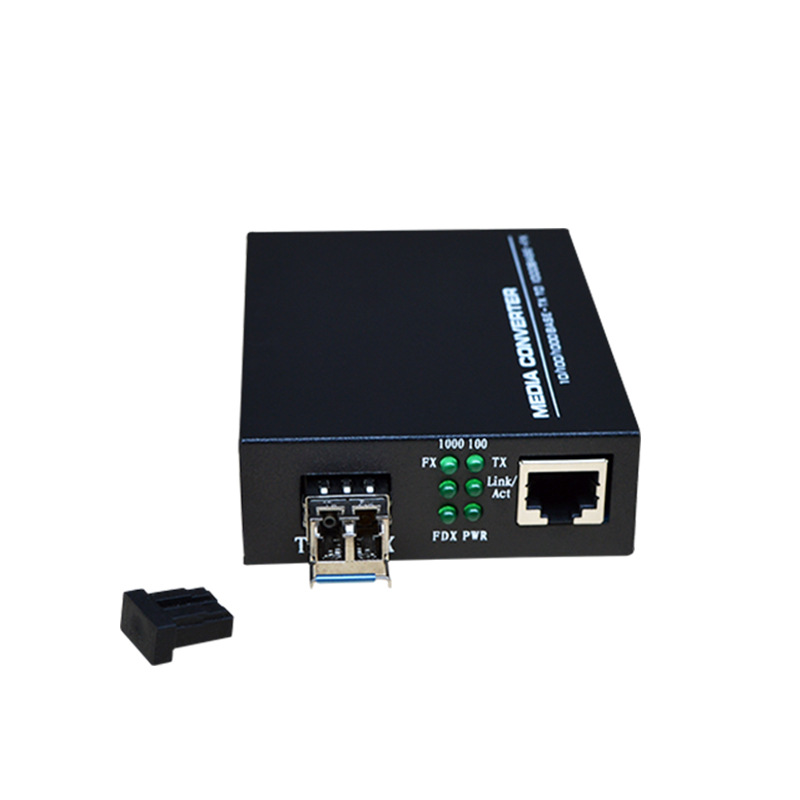A fiber optic media converter is a device that converts and connects different media. Common cables used for Ethernet are copper cables such as Cat 5. On the other hand, cables with fiber optics are also used to improve performance such as communication distance and speed. You can connect these different media with a media converter. Learn more about fiber converters here.

What is fiber optic media converter?
A fiber optic media converter, commonly referred to as a fiber optic media converter, is a device used on computer networks that enables various network media to be connected to a fiber optic cable network. It is mainly used when connecting older copper-based cabling systems, such as twisted pairs, to increasingly fiber optic networks. Media converters are often used in large metropolitan area networks (MANs) as well as in large corporate networks called corporate networks.
Types of Fiber Optic Media Converters
The most common media converter in the modern world is a media converter that converts signals from twisted pair cables to fiber. At the same time there are modifications of OEO media converters, i.e. the conversion of the signal "optics-electrical-optics".
A large number of manufacturers offer many different types of converters at different media converter prices. They all differ in their properties, functions and purposes. These are...
Fiber to fiber media converter
This type of device is also known as a singlemode-to-multimode converter or multimode-to-singlemode fiber converter, which enables communication between multimode (MM) and singlemode fiber ((SMF), between different "power" fiber sources and between two fibers and a fiber, they can also convert one wavelength to another.

PoE media converter
Optical Power-over-Ethernet (PoE) converters offer reliable and convenient operation of PoE-operated devices. PoE media converters provide power to devices from IP phones to Wi-Fi devices over UTP copper cables.
Managed media converters
This device gives network administrators complete control over data, bandwidth and traffic. This allows administrators to remotely and securely manage and troubleshoot the network for and maintain optimal performance and reliability.
Unmanaged media converters
These devices are plug and play converters. They're easy to install and easy to fix. In contrast to controlled transmitters, they do not offer the same monitoring and setting functions.
Copper to fiber media converter
Copper to fiber optic converters support the IEEE 802.3 standard and provide connectivity for devices that operate from mainstream Fast Ethernet to 10 Gigabit Ethernet. Some converters support 10/100 or 10/100/1000 speed switching, which allows devices with different baud rates and interface types to be integrated into a seamless network.
Ethernet copper to fiber media converter
The first Ethernet media converter module family, which has numerous Pearl functions, transparently connects UTP copper with glass fiber by being integrated into the high-density Pearl media converter chassis.
The first Ethernet media converter products offer an economical way to extend existing network distances, to continue to use conventional devices without fiber optics or to extend between devices opposite one another. For network administrators, the media converter module with advanced functions is the best choice for setting up a network or for responding to network failures.
The links at both ends are completely transparent, and the auto-negotiation, link pass-through, far-end fault, auto-MDIX and pause functions enable more efficient troubleshooting for on-site maintenance. Just do it. These features of the PearlFirst Ethernet Media Converter Module are the best choice for network administrators because of the cost and time savings, global technical support and lifetime warranty.
TDM copper to fiber media converter
Media converters for data centers extend the creative lifespan of existing copper-based switches and enable the gradual progression from copper to fiber. The media converter can also be used with new copper switches with fixed RJ-45 ports. This is much cheaper than an identical fiber optic switch. Depending on the situation, network managers can only choose copper ports on multimode or single-mode fiber optics, which increases the flexibility of the server farm and at the same time lowers general costs.
Serial to fiber media converter
Serial to fiber media converters connect RS422, RS232, and RS485 devices directly to fiber links. By sending information over fiber, these sequential media converters provide a prudent way to expand the scope of sequential devices.
Contact: Andy Huang
Phone: 0086-755-89239407
E-mail: sales@beskco.com
Add: No.3106,Longgang Avenue,Pidi Town, Longgang District, Shenzhen China
We chat